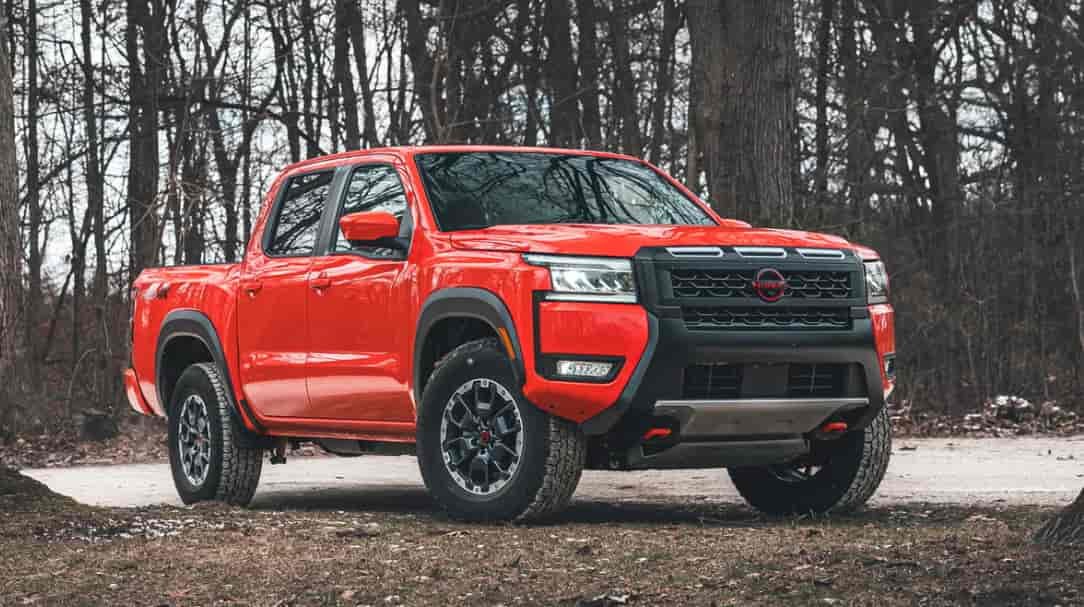Can the 2025 Nissan Frontier truly live up to its reputation as a balanced midsize truck that delivers power without sacrificing fuel economy? For many drivers, the Nissan Frontier Miles Per Gallon rating is more than just a number. It reflects how efficiently their truck performs on highways, city roads, and even off-road adventures. In a world where gas prices continue to fluctuate and sustainability becomes a greater priority, MPG is a deciding factor for anyone considering a pickup truck.
The 2025 model year brings a few refinements to the Frontier’s powertrain and aerodynamics. Nissan has promised improved efficiency without compromising the truck’s rugged capability. But how close are the official EPA ratings to what owners are actually experiencing in the real world? This article dives deep into the facts, exploring both the laboratory data and real-life mileage reports from Frontier owners and automotive experts.
By the end, you will have a clear understanding of what to expect from the Nissan Frontier in terms of real-world fuel economy, how it stacks up against its competitors, and practical tips to help you get the most out of every gallon.
Official 2025 Nissan Frontier MPG Ratings (EPA Data)
According to the official EPA ratings, the 2025 Nissan Frontier continues to deliver competitive fuel economy for a midsize pickup. The latest model keeps the same 3.8-liter V6 engine that produces 310 horsepower paired with a nine-speed automatic transmission. Despite its strong output, the Nissan Frontier Miles Per Gallon figures remain fairly efficient for daily driving and light towing.
For the two-wheel drive version, the Frontier achieves around 18 MPG in the city, 24 MPG on the highway, and a combined rating of 21 MPG. The four-wheel drive variant averages slightly lower with 17 MPG city, 22 MPG highway, and a combined 19 MPG. These figures may vary slightly by trim, with the PRO-4X model generally being the least fuel-efficient due to its off-road tires and additional weight.
Compared to the 2024 model, the numbers are nearly identical, showing that Nissan focused more on refinement and drivability rather than major efficiency changes. However, when placed next to other midsize trucks in the same class, the Frontier still performs admirably with a good balance between power and fuel economy. For buyers seeking a capable yet relatively fuel-conscious truck, the 2025 Nissan Frontier remains a practical choice.
Real-World Nissan Frontier MPG: Driver-Tested Results
While official numbers tell one story, the real-world experience often paints a more practical picture. Many drivers have shared their actual mileage on platforms like Fuelly, Edmunds, and automotive forums, providing valuable insight into how the Nissan Frontier performs outside laboratory testing. On average, owners of the 2025 Nissan Frontier report achieving between 19 and 23 miles per gallon depending on driving conditions and habits.
In city driving, most drivers notice slightly lower results than the EPA rating, with some averaging around 17 MPG during short commutes or heavy traffic. On the highway, however, several owners have exceeded expectations, reaching 25 MPG or higher during long-distance cruising at steady speeds. This shows that the Nissan Frontier Miles Per Gallon performance can vary significantly depending on terrain, payload, and driving style.
Real-world tests from automotive reviewers such as Car and Driver and MotorTrend also confirm that the Frontier’s actual fuel economy remains competitive within the midsize truck category. They highlight its smooth power delivery and consistent performance as key strengths, even if the MPG does not always match the most efficient rivals. Overall, the Frontier maintains a realistic balance between capability and fuel savings, making it reliable for both work and daily use.
Fuel Efficiency Breakdown by Trim and Drivetrain
Each version of the 2025 Nissan Frontier offers slightly different fuel economy figures based on trim level and drivetrain configuration. The entry-level S trim with two-wheel drive provides the most efficient results, averaging about 21 miles per gallon combined. The SV trim follows closely, giving similar numbers but with added comfort and technology features that have minimal impact on weight or aerodynamics.
Moving up to the PRO-4X trim, efficiency takes a modest dip. This version is built for off-road adventures, featuring all-terrain tires, skid plates, and a higher ride height. These upgrades increase resistance and weight, which naturally reduce fuel efficiency. In most cases, PRO-4X drivers report an average of 18 to 19 MPG combined. The SL trim, offering premium amenities and four-wheel drive, falls between the SV and PRO-4X in overall fuel consumption.
The difference between 4×2 and 4×4 configurations also plays a major role. Two-wheel drive models tend to be lighter and use less power to move, while four-wheel drive systems provide better traction but require more energy to operate. Drivers who mostly travel on highways or paved roads will find the 4×2 version more economical, whereas the 4×4 is better suited for those who prioritize control and versatility in challenging conditions.
Nissan Frontier MPG vs Competitors (Tacoma, Ranger, Colorado)
When comparing midsize pickup trucks, the 2025 Nissan Frontier holds its own in a fiercely competitive segment. Its main rivals include the Toyota Tacoma, Ford Ranger, and Chevrolet Colorado, all of which have introduced updated engines aimed at improving fuel economy. On paper, the Nissan Frontier Miles Per Gallon rating may not lead the class, but in real-world testing, it remains impressively consistent and dependable.
The 2025 Toyota Tacoma now offers a turbocharged four-cylinder engine that boosts efficiency, delivering about 22 MPG combined in most trims. The Ford Ranger achieves similar numbers, averaging between 21 and 23 MPG depending on configuration. Meanwhile, the Chevrolet Colorado sits at roughly 20 MPG combined. In comparison, the Nissan Frontier averages around 21 MPG combined for its two-wheel drive version, putting it right in the middle of the pack.
While some competitors may edge out the Frontier slightly in laboratory tests, drivers often praise Nissan’s naturally aspirated V6 for its smoothness and reliability. Many also report that its real-world fuel economy tends to remain stable even under heavy loads, unlike some turbocharged rivals. This makes the Frontier a dependable choice for those who value predictable performance and low maintenance without excessive fuel costs.
Factors Affecting Nissan Frontier’s Fuel Economy
Several factors can influence how efficiently the 2025 Nissan Frontier consumes fuel, even when two trucks have identical specifications. Driving habits remain one of the most significant elements. Aggressive acceleration, frequent braking, and high-speed driving all reduce efficiency and can lower the Nissan Frontier Miles Per Gallon figures by several points. Drivers who maintain steady speeds and anticipate traffic flow often see the best results.
Vehicle maintenance also plays a crucial role. Underinflated tires, dirty air filters, or delayed oil changes can lead to unnecessary fuel waste. Ensuring that the truck is regularly serviced helps maintain peak performance and optimal MPG. Payload and towing weight have a direct effect as well. Carrying heavy equipment or towing trailers increases engine strain, which naturally consumes more fuel.
Environmental and terrain conditions add another layer of complexity. Driving uphill or on rough off-road paths requires more power, while flat highways promote better mileage. Even temperature can make a difference since colder weather thickens fluids and reduces efficiency. Understanding these factors allows Frontier owners to adjust their habits and maintain the best possible balance between power and economy.
How to Maximize Your Nissan Frontier Miles Per Gallon
Getting the best fuel economy out of your 2025 Nissan Frontier is not just about what the truck can do but how you drive and maintain it. Small, consistent habits can make a noticeable difference in fuel consumption. One of the most effective ways to improve your Nissan Frontier Miles Per Gallon is to maintain proper tire pressure. Underinflated tires create more rolling resistance, which forces the engine to work harder and burn more fuel. Checking your tire pressure monthly can help keep efficiency steady.
Smooth driving is another key factor. Gradual acceleration, early braking, and avoiding prolonged idling can improve MPG by up to 10 percent. Many owners also find that using cruise control on highways helps maintain consistent speeds, reducing unnecessary fuel burn. Keeping your truck light by removing unused gear or tools from the bed can further enhance efficiency.
Regular maintenance, such as replacing air filters and using the recommended motor oil, helps the engine breathe and perform better. For those who tow, planning routes to avoid steep climbs and maintaining moderate speeds will also contribute to better mileage. When combined, these practices can make your Nissan Frontier not only more fuel efficient but also more reliable over time, maximizing both performance and savings at the pump.
Conclusion
The 2025 Nissan Frontier Miles Per Gallon proves that a midsize pickup can still offer capable performance without becoming a gas guzzler. While it may not claim the absolute top spot for fuel efficiency in its class, it provides dependable and consistent results in both EPA testing and real-world driving. The balance between its powerful V6 engine and reasonable MPG makes the Frontier an appealing choice for those who need a truck that works hard yet stays efficient.
Compared with competitors like the Toyota Tacoma, Ford Ranger, and Chevrolet Colorado, the Frontier stands out for its reliability and predictable fuel use over time. Drivers who maintain their vehicles and adopt smart driving habits can expect steady mileage and long-term savings. With just a few adjustments in daily routines, owners can maximize efficiency without sacrificing capability.
In the end, the 2025 Nissan Frontier continues to be a solid and trustworthy option for drivers who value strength, comfort, and sensible fuel economy. What MPG are you getting from your own Nissan Frontier, and how does it compare to the official ratings?

